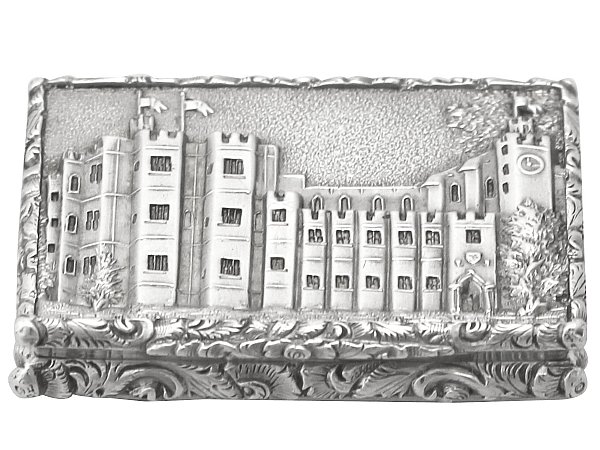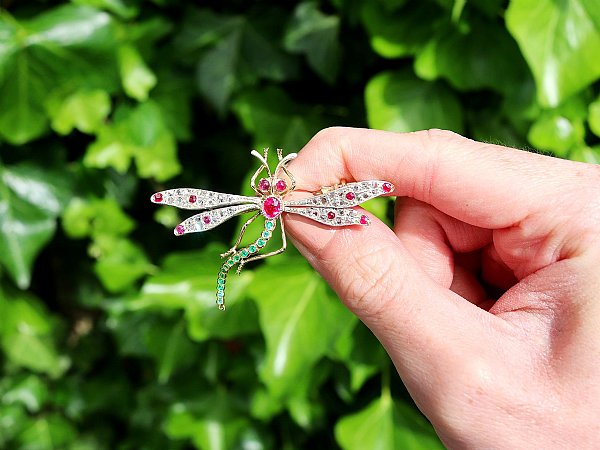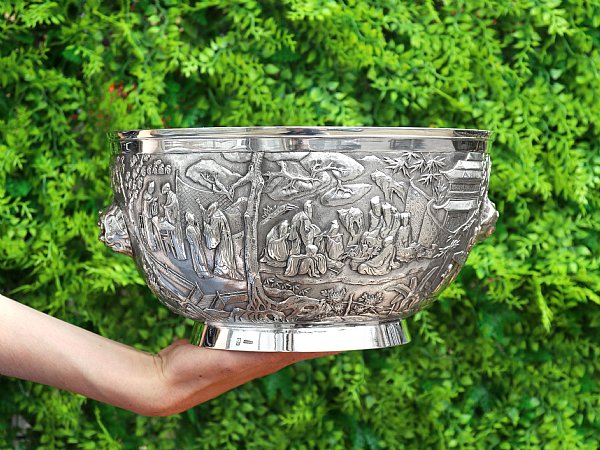Search Results for: '{{searchText}}'
Sorry...
We don't seem to have what you're looking for.
However we do have thousands of magnificent pieces of silver and jewellery available for you to view online. Browse our store using one of these categories.
Please wait for loading data... 
AC Silver is pleased to offer a fine range of antique silver vinaigrettes for sale.
Our diverse vinaigrette inventory includes exceptional and collectable examples from the Victorian and Georgian eras, in addition to a range of vinaigrettes available to buy from the prolific maker Nathanial Mills.
Andrew Campbell, using his 40 years’ experience within the antique industry, handpicks all antique and vintage vinaigrettes for sale.
All of the silver vinaigrettes at AC Silver come with free and insured worldwide shipping and a 14 day return policy.

Sterling silver vinaigrettes are small decorative boxes that were used during periods of travel, as a more accessible and practical alternative method of carrying perfume and scents than moving large glass bottles and vials. The perfume, or aromatic vinegar, would be contained within these boxes soaked in a sponge. The box would also have a grille to cover the sponge. Vinaigrette sizes tended to vary, with their widths spanning from 0.5 to 4 inches. Silver examples would always be gilded at the point where the sponge would touch the metal. This was to avoid any corrosion. Today, vinaigrettes are a highly collectable item of antique silver.
Being able to drown out the scent of muddied streets and open sewers with sweet-smelling scents was essential for anyone who could afford it. Vinaigrettes, therefore, were key accessories for the sophisticated lady or gentleman.
During the 19th century, vinaigrettes were a fashionable indication of social ranking, as those who were able to afford perfume or concern themselves with their outward appearance at all were among the elite. Sanitisation standards were low for all including the highest classes, but they were able to compensate with perfume which would distinguish them from the working class. Not only could it disguise the scents of the streets; many also believed that pleasant smells would protect them from diseases. The association between illness and bad smells was understood at this time - the cause and effect, however, was misunderstood.
Perfume was also an exotic extravagance, so to be able to both afford perfume and then contain it within a decorative vinaigrette was the height of social distinction and a display of grandeur and wealth. The early grilles in vinaigrettes were pierced in simple, geometric shapes. Sometimes, engraving that corresponded to the box itself also featured. Later on, some vinaigrettes included impressive decoration on the grille. Flora and fauna were popular features, with birds and flowers being the most common in this style. Finding examples like this today can be challenging for collectors, so keeping a keen eye out is important
Perfume is as old as civilized humanity itself, with the first mention of a perfumer being recorded in ancient Mesopotamia. Ancient Egyptians employed the use of perfume in all aspects of life, and utilized scents in everything from religious ceremonies to burial preparations and even daily wear. The Egyptians with a high social ranking would wear a lily-based perfume to communicate their social status to others.
The Persians then maintained the concept of fragrance as a signifier of political status, but it wasn’t produced on a large scale until the Ancient Romans and Greeks realised perfume’s power. Archaeologists recently discovered a perfume factory from 2,000 BC in Cyprus, which is thus far the earliest evidence of the mass production of perfume that we have found.
In Western Europe, perfume being considered a highly skilled art form practised by alchemists was first recorded in 1221 in monks' recipes of Santa Maria delle Vigne or Santa Maria Novella of Florence, Italy.
In 1370, Queen Elizabeth of Hungary ordered a perfume to be created which would be referred to as ‘Hungary Water', and the popularity of perfume travelled across Renaissance Italy during the 16th century via Catherine Medici’s personal perfumer Rene le Florentine, and then on to his homeland of France. These connections with royalty secured perfume as an object of desire for those wishing to emulate the higher classes within the European psyche.
When considering the ancient history and traditions behind perfume, it continued to be an exclusive product until relatively recently, with it being available at an affordable price and to the mass market being a fairly new development.
The perfume market changed dramatically at the end of the 19th century when scientific advances in synthetic scents made it possible for scents to be mass produced without the extraordinary costs and labour involved in natural extraction methods.
By the 19th century, a variety of perfume containers existed, the vinaigrette, a gilded metal box with a pierced, decorated interior grille, was used to hold sponges soaked in scented vinaigres de toilette (aromatic vinegar). The interiors were gilded to prevent the silver from staining. From 1800 – 1850, these boxes were manufactured in vast quantities in various shapes and forms. Often the shapes were delicate and tasteful, reflecting the sophistication of the owner.
As with many personal items of sterling silver antiques, the novelty of unusual shapes and designs proved to be popular, with designs like mussel shells and acorns becoming very valuable to collectors today.
These were worn around the neck for convenience - being able to quickly douse one’s self in scent or raise the preferred scent to your nose while travelling couldn't be undervalued. However, they were also a fashionable statement as well as having been incredibly practical in the 18th century.
Examples crafted in the Georgian and Regency periods tend to be the most sought after, with the quality declining slightly in the Victorian age. The pieces that were made in the Victorian era were also almost exclusively used by women. If you are looking for perhaps the finest examples from around this era, the work of Nathanial Mills (who worked from 1826 -1850) would be an excellent place to start. The advent of improved sanitation around the mid-19th century meant that vinaigrettes were exposed for not actually preventing illness, and their popularity eventually died down.
Presently, these trinkets still make for wonderful gifts or personal treasures. Their diminutive size and charming detail allow them to be worn as pendants or to be transported easily as first intended. These vinaigrettes are the first incarnation of the travel size perfume decanters which have consistently been used since the 18th century, and remain as popular as ever to this day.




